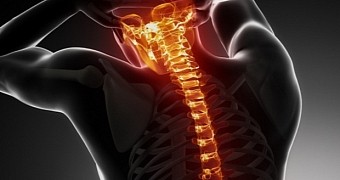In a report released earlier this week, scientists at the Rush University Medical Center in Chicago detail their work experimenting with a novel way to repair injured spinal cords and at least partly restore motor or sensory function in people who have suffered damage to the nerves in their spine.
According to Dr. Richard G. Fessler, a professor of neurological surgery and the study's principal investigator, well over 1,200 people in the US alone sustain crippling injuries to their spine on a yearly basis.
Since there are currently no therapies to address damage to nerves in the spine, this translates into about 1.3 million individuals being forced to live with a spinal cord injury. “These injuries can be devastating, causing both emotional and physical distress,” Dr. Richard G. Fessler explains.
Stem cells could take care of this problem
The clinical trial now ongoing at the Rush University Medical Center under Dr. Richard G. Fessler's supervision comes down to trying to use stem cells to fix spinal cord injuries within 14 to 30 days after they occur. The goal is to use the stem cells to at least partly restore nerve function.
“The therapy uses a population of cells derived from human embryonic stem cells containing progenitor cells that support nerve cells and can potentially make poorly functioning nerves function better,” the research team explains.
To get the best results, the stem cells are delivered directly to the site of injury. Dr. Richard G. Fessler and his colleagues aren't aiming high, but instead merely hope for modest improvements in motor or sensory function, as even such small an achievement would still considerably improve quality of life.
This novel therapy is still in its early days
As noted, the clinical trial is just now ongoing. The researchers aim to treat patients who have suffered a complete cervical spinal cord injury and who, as a result of this damage to their spine, have lost all sensation and movement below the injury site.
As of now, the novel stem cell treatment has only been administered to one patient. The scientists are yet to learn whether or not the therapy actually worked, but are quite pleased that the procedure to inject the stem cells was free of complications.

 14 DAY TRIAL //
14 DAY TRIAL //